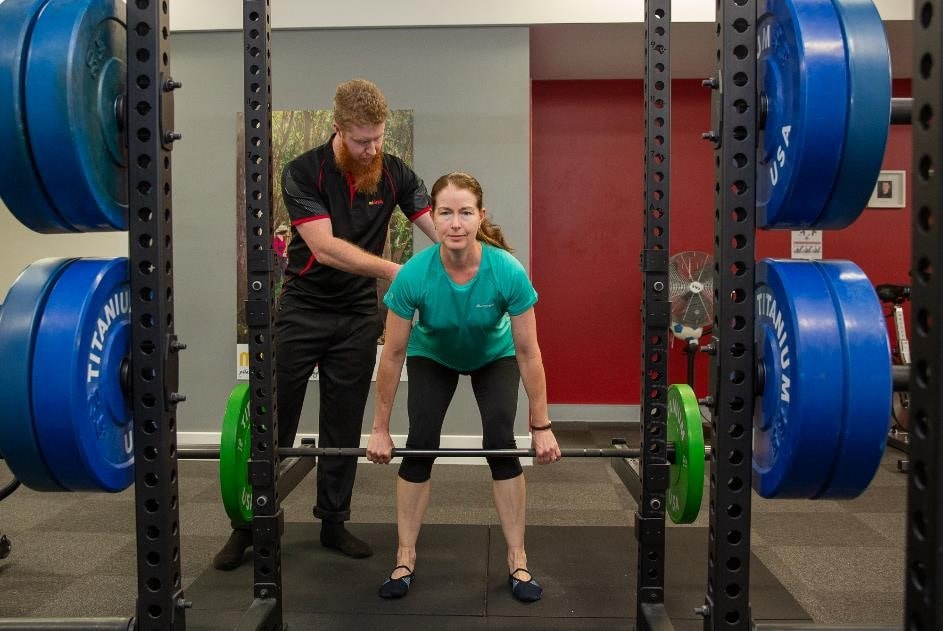Yes, light exercise can support recovery, but it’s crucial to consult a professional and balance rest with gentle activity to avoid worsening the injury.
In this article, we will explore the importance of understanding your injury, the benefits and risks of exercising while injured, how to exercise safely during recovery, and tips for preventing future injuries. By the end, you’ll have a clear understanding of when to rest and when light activity might actually help in your recovery.
Understanding the Nature of Your Injury:

The first step in deciding whether or not you can exercise during an injury is understanding what type of injury you have. Injuries can be categorized into two broad types: acute injuries and chronic injuries.
- Acute Injuries: These occur suddenly and are often the result of trauma, such as a sprained ankle, a broken bone, or a torn muscle. Acute injuries typically present with immediate pain, swelling, and sometimes bruising. They may require rest or even medical intervention such as surgery.
- Chronic Injuries: These develop over time due to overuse or repetitive stress. Examples include tendinitis, shin splints, and stress fractures. Chronic injuries often present as a dull, persistent pain that may worsen with continued activity. While it’s tempting to push through the pain, resting and proper rehabilitation exercises are usually essential to recovery.
Why Exercise Can Help Healing in Certain Cases?
When done correctly, light and controlled exercise can actually aid recovery in many cases. It may seem counterintuitive, but staying active in the right way can speed up healing for certain types of injuries. Here are some of the benefits of exercising during recovery:
Promotes Blood Flow and Healing:
Exercising improves circulation, which increases the delivery of oxygen and nutrients to the injured area. This can help speed up the body’s natural healing process. Gentle exercises such as walking or swimming can help encourage blood flow without placing undue stress on the injured area.
Also read: Do Local Gyms Teach Yoga Classes – Classes, Benefits, and More!
Prevents Muscle Atrophy and Weakness:
When you’re injured, it’s easy to become sedentary, which can lead to muscle atrophy (loss of muscle mass). Even if the injury affects a specific body part, you can often continue to work other parts of your body. For example, if you have an ankle sprain, you can focus on upper-body strength training to maintain muscle mass and overall fitness.
Improves Joint Mobility and Flexibility:
When joints and muscles remain inactive for extended periods, they can become stiff and lose flexibility. Engaging in gentle movement, such as stretching or light exercises, is essential to maintain flexibility and prevent stiffness. These activities help reduce the risk of scar tissue formation and enhance overall range of motion. Incorporating regular movement into your routine can significantly improve your physical well-being.
Boosts Mental Health:
Injury recovery can take a toll on your mental health. Many athletes and fitness enthusiasts struggle with feelings of frustration or anxiety during recovery because they are unable to perform at their usual level. Light exercise releases endorphins, which can help elevate mood and reduce stress. Staying active, even in a limited way, can make a big difference in your mental well-being during recovery.
Risks of Exercising During Injury Recovery:

While exercise can be beneficial in some cases, there are significant risks if you continue with inappropriate or high-intensity exercises during an injury. Pushing your body too hard or exercising without proper care can lead to worsening of the injury, chronic pain, or even new injuries. Below are some potential risks of exercising while injured:
Aggravating the Injury:
Engaging in intense or high-impact exercise too soon after an injury can lead to further damage. For example, running on a sprained ankle or lifting heavy weights with a shoulder injury can turn a mild issue into a more severe problem. Even if the pain is bearable, you may still be causing damage that could delay healing.
Prolonged Recovery Time:
Exercising too soon or too intensely can slow down the healing process. While exercise can promote blood flow and mobility, overworking the injured area may result in inflammation, swelling, and delayed recovery. This can turn a minor injury into a long-term issue, preventing you from fully returning to your normal activity level.
Compensatory Injuries:
If you have an injury to one part of your body, you may unknowingly compensate by overusing other muscles or joints. This can result in new injuries. For example, an injured knee might cause you to put extra pressure on the opposite leg, potentially leading to hip or back problems.
When to Rest Completely:
There are times when rest is the best course of action. Here are a few indicators that you should avoid exercising entirely until you’ve consulted a healthcare professional:
- Sharp or Intense Pain: If you’re experiencing sharp pain, especially during or after movement, this is a sign that you should stop exercising. Pain is your body’s way of telling you something is wrong, and pushing through it can lead to further damage.
- Swelling and Inflammation: Persistent swelling or inflammation, especially in joints, can be aggravated by exercise. Allow the swelling to subside before attempting to exercise.
- Instability or Weakness: If your injury involves a joint or muscle that feels unstable, weak, or unable to bear weight, exercise should be avoided. Instability can increase the risk of falls, dislocations, or other injuries.
Also read: What Oil Filter For Kohler Fits 725 Series Kohler Engine – A Complete Guide!
How to Safely Exercise During Recovery:
If you’re dealing with a minor injury and want to stay active, it’s important to approach exercise with caution. Here are some general guidelines for safely exercising while healing:
Consult a Professional:
Before resuming exercise, it’s essential to consult a doctor or physical therapist to ensure a safe return. They can assess the specifics of your injury and offer tailored recommendations for rehabilitation exercises.
This personalized guidance helps you avoid re-injury and promotes effective healing. Prioritizing professional advice ensures that your activities align with your recovery goals.
Focus on Low-Impact Activities:

Low-impact exercises such as walking, swimming, or cycling can keep you active without putting too much strain on your injury. These activities are gentle on your joints and muscles and help maintain cardiovascular fitness during recovery.
Modify Your Workouts:
You don’t need to halt your exercise routine entirely; instead, consider modifying it to accommodate your injury. For instance, if you’re dealing with a leg injury, shift your focus to upper-body workouts that don’t involve standing or putting weight on your legs.
Opt for lighter weights and decrease the number of repetitions to prevent strain. Always avoid any movements that lead to discomfort to ensure a safe recovery.
Listen to Your Body:
Listen to your body’s signals during exercise. If you encounter any pain or discomfort, stop immediately. While it’s common to experience some stiffness or mild soreness during injury rehabilitation, sharp pain suggests you may be overexerting yourself. Prioritizing your well-being is essential for a safe and effective workout.
Use Proper Form and Technique:
When exercising with an injury, maintaining proper form becomes crucial to prevent further harm. Poor technique can lead to unnecessary stress on your body, potentially exacerbating your current injury or causing new ones. It’s essential to be mindful of how you move, as compensatory injuries can arise from imbalances in your body.
If you’re uncertain about your form, consider consulting a trainer or physical therapist for guidance. Their expertise can help you ensure that you’re exercising safely and effectively during your recovery.
Also read: What Size Television Can Fit 2201DS – TV Size Guide!
Include Mobility and Flexibility Exercises:
Stretching and mobility exercises are crucial for preventing stiffness and preserving your range of motion. Incorporating activities like yoga or Pilates into your routine can be highly beneficial, as they enhance flexibility while minimizing strain on injured areas.
These practices not only promote recovery but also help improve overall body awareness and alignment. Regularly engaging in gentle stretching can lead to better performance in other exercises and everyday activities.
Examples of Exercises for Common Injuries:
Here are some recommendations for exercises that are generally safe to perform during recovery from common injuries:
- Ankle Sprains: Try seated ankle circles, gentle toe raises, or water-based activities like swimming to maintain strength and mobility.
- Knee Injuries: Focus on strengthening the surrounding muscles with exercises like leg lifts, wall sits, and swimming, while avoiding high-impact movements like running or jumping.
- Shoulder Injuries: Start with light range-of-motion exercises such as arm circles or wall push-ups. Avoid heavy lifting or overhead movements until the shoulder has healed.
The Role of Rest and Recovery:

Rest is a crucial part of the healing process. Over-exercising, especially too soon after an injury, can delay recovery and cause further harm. However, too much rest can also lead to stiffness, muscle weakness, and decreased mobility. Striking a balance between rest and controlled, gentle movement is key to a successful recovery.
- Sleep: Don’t underestimate the importance of good sleep. The body repairs and regenerates tissue during deep sleep, making adequate rest essential for injury recovery.
- Hydration and Nutrition: Proper hydration and nutrition are vital for healing. Foods rich in protein, vitamins, and minerals support tissue repair and reduce inflammation, which is crucial for recovery.
FAQ’s
1. Can I exercise with an acute injury?
It varies based on the severity of the injury. Minor acute injuries may allow for gentle movement, but consult a healthcare professional for guidance.
2. What types of exercises are safe during recovery?
Activities that are easy on the joints, like walking, swimming, and cycling, are typically safe options during recovery. Focus on modifying your routine to avoid stressing the injured area.
3.What advantages does exercise offer for my recovery?
Light exercise promotes blood flow, prevents muscle atrophy, and improves joint mobility, all of which can aid the healing process.
4. When should I completely rest instead of exercising?
Rest is crucial if you experience sharp pain, persistent swelling, or instability in the injured area. Consult a healthcare professional if unsure.
5.How can I prevent future injuries during exercise?
Maintain proper form, gradually increase intensity, incorporate flexibility and strength training, and listen to your body to avoid overuse.
Conclusion
In summary, light exercise can be beneficial for recovery from certain injuries, but it’s vital to understand the nature of your specific injury. Always seek advice from a healthcare professional to identify safe and appropriate activities. Striking a balance between adequate rest and gentle movement is crucial for effective healing. Prioritizing this balance will support your recovery journey and help prevent further complications.